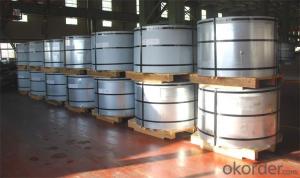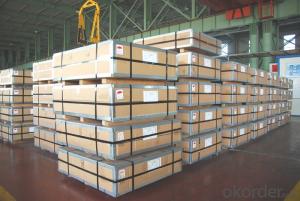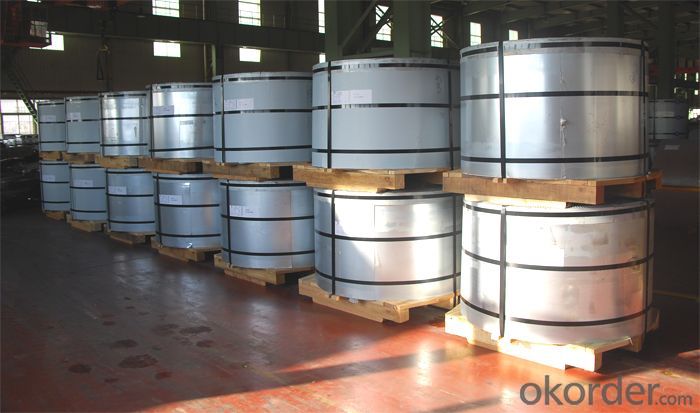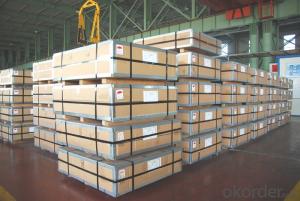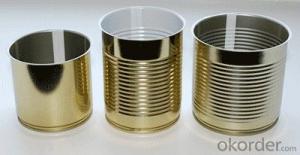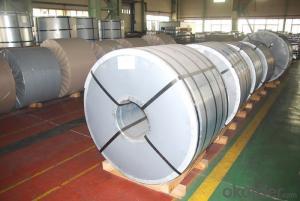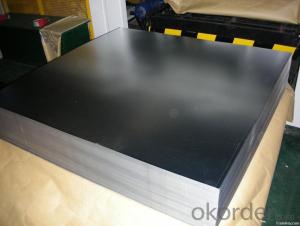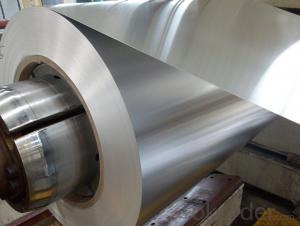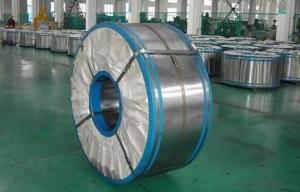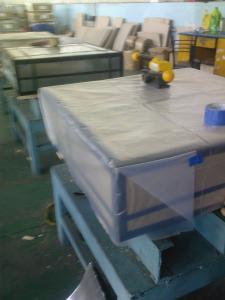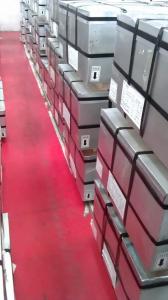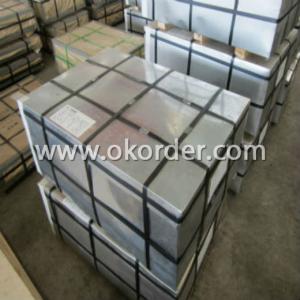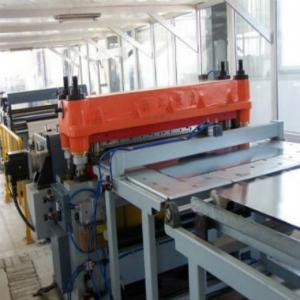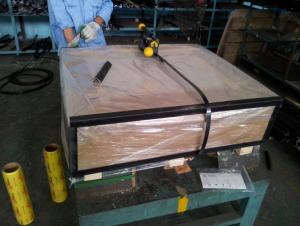Lacquered Tinplate for Metal Packing sheet Coils
- Loading Port:
- Shanghai
- Payment Terms:
- TT OR LC
- Min Order Qty:
- 100 m.t.
- Supply Capability:
- 40000 m.t./month
OKorder Service Pledge
OKorder Financial Service
You Might Also Like
Electrolytic Tinplate undoubtedly enjoys the pride of place as a packaging medium especially for food. It owes its unique position to its "nine layer sandwich structure", each of which contributes to its eminence as a packing material. The steel base provides the necessary strength and formability for can fabrication. The tin-iron alloy layer provides the bond between the steel and free tin layer. The free tin layer is not only responsible for the attractive bright finish and ease of solderability but is also non-toxic- a factor of vital importance in food packaging!
Electrolytic TinPlate: Composition
E.T.P. consists of five layers each of which performs a different role:
1. Steel Base: Provides stiffness to the material due to its thickness and mechanical strength. Its chemical composition imparts special properties to resist corrosion.
2. Iron-Tin Alloy: This is made up by the inter-metallic compound Fe-Sn2. Due to its electrochemical characteristics, it acts as a barrier against corrosion. For effective action, its continuity is more important than its quantity.
3. Metallic Tin: Tin has many advantages which have turned it into the most important element to protect steel used for cans; in many foods, it acts as a simple barrier against corrosion, improves weldability, it is an excellent base for lithographic printing and for applying lacquers. In tin-robbing foods, it acts as a sacrificial element.
4. Passivation Film: According to its nature, it makes it possible to improve the E.T.P.’s resistance to sulphiding, oxidation and rust. It is also a conditioner to improve the adherence of varnishes, inks, lacquers etc.
5. Oil Film: Protects the sheet from the humidity in the environment and makes easy to handle. It is applied using an electrostatic oiler on both sides of the sheet.
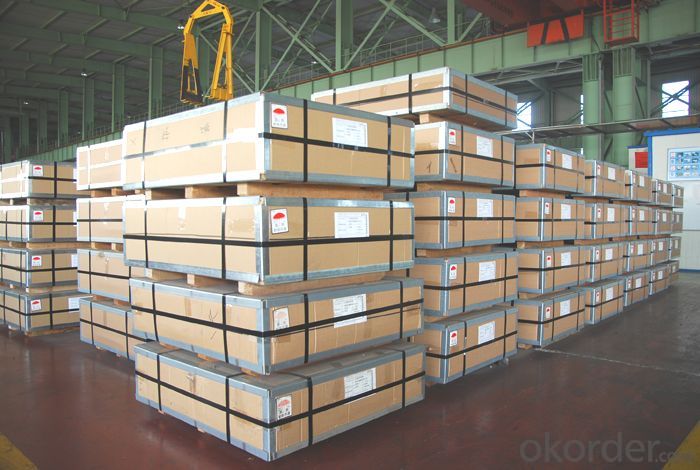
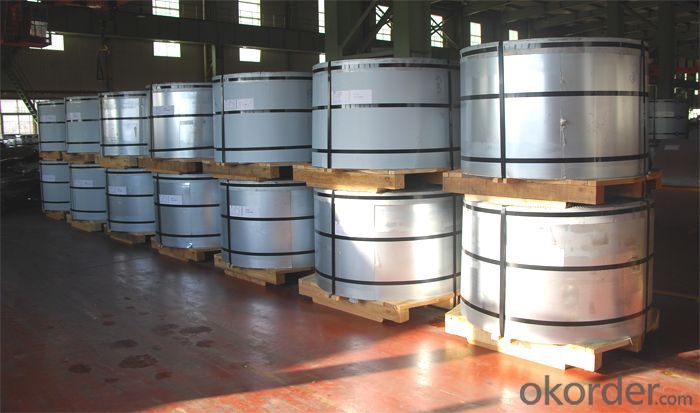
Prime Lacquered Tinplate for Metal Packing sheet Coils Specification
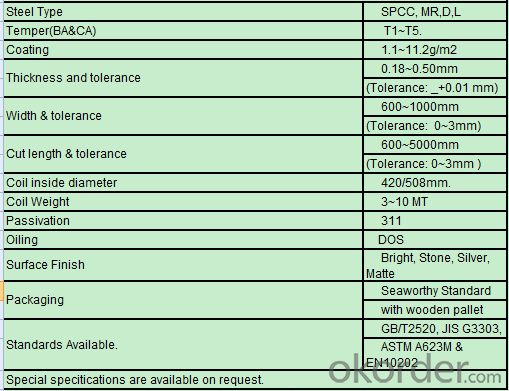
FAQ of Lacquered Tinplate for Metal Packing sheet Coils
How long does it take to get the product if i place an order?
With the process of your requirements,we will pack and deliver in 3-7 days.If it is by sea shipment,it will take 15-45 days depending on different locations.
- Q: What's the latest price for tinplate?
- Tinplate, 6500 yuan to 7500 yuan / ton
- Q: What are the typical manufacturing processes for tinplate products?
- The typical manufacturing processes for tinplate products include coil preparation, coil cleaning, annealing, coating, temper rolling, cutting, and forming.
- Q: What are the main considerations for choosing tinplate suppliers?
- The main considerations for choosing tinplate suppliers include the quality of the tinplate, their manufacturing capabilities, pricing, reliability, and customer service.
- Q: What is the difference between Maguchi Tetsu tinplate and galvanized board
- Tin plated steel sheet and strip, also known as tinplate, the steel plate (belt) surface tin plated, has good corrosion resistance, non-toxic, can be used as packaging material cans, inside and outside the cable sheath, telecommunications instrument parts, flashlight and other hardware.
- Q: Can tinplate be used for stationery and office supplies?
- Yes, tinplate can be used for stationery and office supplies. Tinplate is a lightweight and durable material that can be easily molded into various shapes and sizes. It is commonly used for making pen holders, pencil cases, storage boxes, and other stationery items. Additionally, tinplate provides a smooth and glossy surface, making it ideal for printing logos or designs on office supplies.
- Q: Tin and tinSince the back skin as long as tinplate will rust, so why not replace tin?
- Tin and tin, are plated plate, is a low carbon steel sheet, and metal coating. Electroplating and hot plating respectively.The difference between the two plates is that the former tin plated, the latter galvanized, because the two kinds of metals have different chemical properties, so their anti-corrosion ability and use is not the same
- Q: What is the shelf life of tinplate?
- The shelf life of tinplate varies depending on various factors such as storage conditions, type of product packaged, and any protective coatings applied. However, tinplate typically has a long shelf life, often lasting several years, as it is known for its corrosion resistance and ability to protect packaged goods from external contaminants.
- Q: How do you clean the dust and trace oil on tin containers?
- Water based cleaning method: that is, with clean water and cleaning agent to remove oil method, the use of water washing process. This process started relatively late in the country, and the technical strength of various manufacturers formula is uneven, of which the more representative of public praise is "evergreen peak" brand CLF water-based cleaning agent series.
- Q: Can tinplate be used for high-temperature applications?
- No, tinplate is not suitable for high-temperature applications due to its low melting point.
- Q: What are the common challenges in processing tinplate?
- Some common challenges in processing tinplate include ensuring proper coating adhesion, preventing tinplate corrosion, managing the formation of tin whiskers, and achieving consistent thickness and flatness in the tinplate sheets. Other challenges may include controlling the tinplate's surface quality, preventing contamination during processing, and ensuring proper handling and storage to avoid damage.
Send your message to us
Lacquered Tinplate for Metal Packing sheet Coils
- Loading Port:
- Shanghai
- Payment Terms:
- TT OR LC
- Min Order Qty:
- 100 m.t.
- Supply Capability:
- 40000 m.t./month
OKorder Service Pledge
OKorder Financial Service
Similar products
Hot products
Hot Searches
Related keywords
